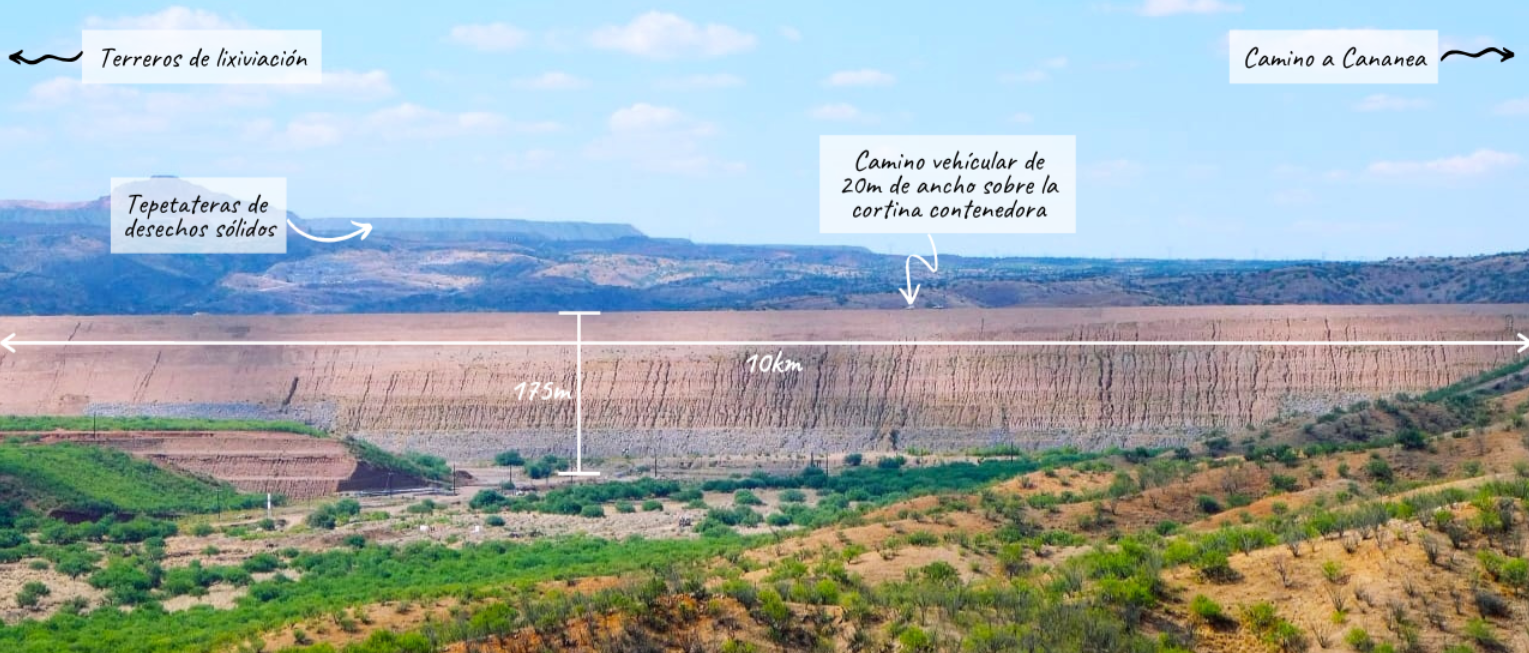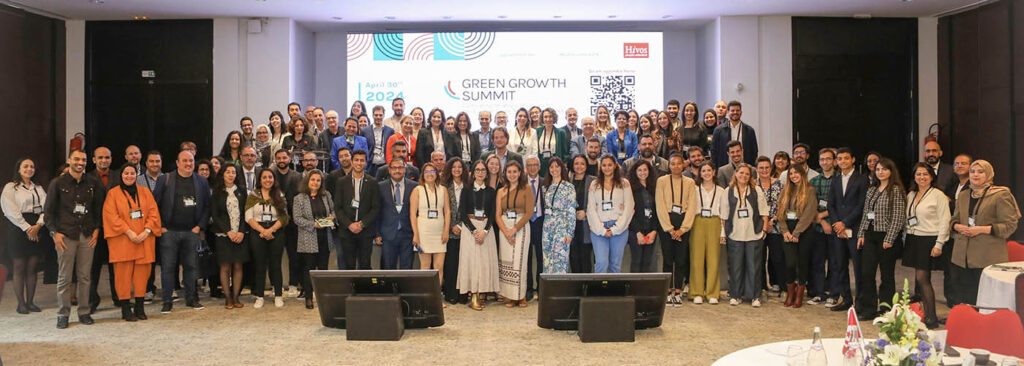Fight for justice after mine spill continues
Grupo México’s New Threat: The fight of a community affected by a toxic mega-mine spill continues
By Claudia Ocaranza, PODER Journalistic Coordinator
Five years after the spill of 40,000 cubic meters of copper sulphate in 2014, the communities in Sonora, Mexico, are still fighting for justice. They are now aided by la Nueva Amenaza de Grupo México (Grupo México’s New Threat), a journalistic project published by PODER’s journalism and data team. The project show how a new tailings dam built by Grupo Mexico inside its mining complex of Buenavista del Cobre is a threat for the communities and demand action from the Mexican government.
That spill has been affecting the health and economy of 7 districts in Sonora for five years. The life of the people living there have been changed forever and even though the government fined Grupo México, owner of Buenavista del Cobre, in 2014 when the spill happened, the company hasn’t been held accountable. Effective remediation is still pending and affected people continue to wait for solutions.
PODER has studied and researched the topic extensively, and the organization accompanies the Comités de Cuenca Río Sonora or CCRS (Río Sonora River Basin Committees) in their pursue of justice. We decided to use some of that information and get new information and use it to create a journalistic project that could boost the people’s claim for remediation and non-repetition.
As part of the project, developed with the support of Hivos, part of the journalistic team of PODER traveled to Sonora between October 22-26 to follow the meetings between the Ministry of the Environment and Natural Resources (Semarnat) and the Attorney’s Office for the Protection of the Environment (Profepa), and the communities of Sonora affected by the toxic spill of 2014.
We recovered pictures, videos and testimonies from the people affected and we held interviews with the officers from Semarnat and Profepa. We created new material, such as the infographic about the new tailings dam and we published 3 stories: “The Great Vision of Grupo México that excludes the population”, “Lots of water for the mining, few for the agriculture”, and “Sonora academics at the service of Grupo México”.
Additionally, for the first time we used our own tool Tower Builder, based on the Open Contracting Data Standard, to visualize the contracts between the Mexican government and the companies that are involved in building the expansion of Grupo México, including the new tailings dam, as providers of the Group. We were able to track 47,000 million pesos payed to 42 companies through 1,327 contracts from 2009 to 2019. We also found 49 beneficial owners of those companies.
We decided to attend the daily press conference that the President Andrés Manuel López Obrador holds at 7:00 am. Claudia, the coordinator of the project and reporter, woke up for 3 days in a row at 4:00 am to be in line at 5:30 am to go inside the conference. And yes, she held her hand up for a long time for two days until the President told her to ask her question (actually, they were several questions).
Since López Obrador became the president, the Mexican news is always focusing on what he says in these conferences, that is why it was important for us to go there and ask him what his government is actually doing to relieve the people affected by the spill of 2014 and now threatened by the new, mega-tailings dam.
To answer those questions, the president acknowledged they were late in providing justice to Sonora, but promised it will happen. He said the Minister of the Environment and Natural Resources had gone several times to Sonora, but Claudia replied that it wasn’t true and that his Ministry still owes the results of the inspection to the new tailings dam and the results of the visits of the officers of his Ministry to Sonora in October. Lastly, because of the pressure he faced with our questions, he said the Minister would go to Sonora.
The next day, the Minister of the Environment and Natural Resources, Víctor Manuel Toledo, as well as the Attorney for the Protection of the Environment, Blanca Alicia Mendoza, were in the press conference. That day the president did not let Claudia ask her questions, but the officers vaguely explained that they were still in the process of completing the inspections and could not give more information. However, Víctor Manuel Toledo committed to visit Sonora the following week.
The Minister of the Environment and Natural Resources finally visited Sonora on December 18, to talk with the people affected by Grupo México. PODER was there, standing side by side with the CCRS, who made very clear that they are demanding concrete actions and that time is up.
The day we launched the project, we sent a press release with the most important findings to our media outlets distribution list, and that, combined with our trips to the press conferences of López Obrador, was very useful to receive great attention from the Mexican media. We participated in 3 radio interviews and several media outlets re published parts of our project: Pie de Página, La Coperacha, Sin Embargo, Proceso, Perimetral, Chiapas Paralelo, Fronteras Desk, Lado b, and Michelle Rivera. Other media outlets did not publish us but did report what the President said in his conferences.
Making this project a reality took us more than 3 months, lots of hours, lack of sleep, liters of coffee, the abilities of all of PODER’s Journalism, Data and Technology team, all the knowledge that the organization as a whole has been collecting for the last 5 years about Grupo México’s spill, the support of the Community Organizing team in the field, and the communication strategy developed by our External Communications team.
We know there is still a lot to do for the people to finally get the justice they deserve, and that different strategies are necessary. For the journalistic team, with this project we accomplished the main reason of existence for journalism and journalists: to be a public service for those less privileged or abused by bigger economic and political powers.





